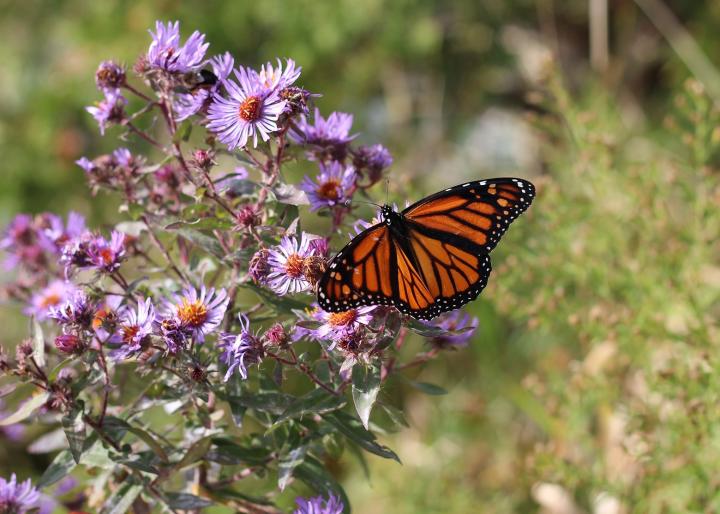
Planting, Growing, and Caring for Asters
Types
The most common asters available in North America are the New England aster (Symphyotrichum novae-angliae) and the New York aster (Symphyotrichum novi-belgii). Both of these plants are native to North America and are great flowers for pollinators. We recommend planting a native species of aster over a non-native species when possible, so talk with your local Cooperative Extension or garden center about which species are best suited to your area. Look for varieties with disease resistance.
North American Asters
- New England asters (S. novae-angliae): Varieties have a range of flower colors, from magenta to deep purple. They typically grow larger than New York asters, though some varieties are smaller.
- New York asters (S. novi-belgii): There are many, many varieties of New York asters available. Their flowers range from bright pink to bluish-purple and can be double, semi-double, or single.
- Blue wood aster (S. cordifolium): Bushy with small, blue-to-white flowers.
- Heath aster (S. ericoides): A low-growing ground cover (similar to creeping phlox) with small, white flowers.
- Smooth aster (S. laeve): A tall, upright aster with small, lavender flowers.
- Aromatic aster (S. oblongifolium): Multi-branched at the base, stiff upright stems, with lavender or pink flowers.
European/Eurasian Asters
- Frikart’s aster (Aster x frikartii) ‘Mönch’: Hailing from Switzerland, this mid-sized aster has large, lilac-blue flowers.
- Rhone aster (A. sedifolius) ‘Nanus’: This aster is known for its small, star-shaped, lilac-blue flowers and compact growth.
ADVERTISEMENT
I challenge this statement: "Asters prefer areas with cool, moist summers and cool nights in sites with full to partial sun." While the native asters in the yard did not do that well during drought conditions in the northeast, the ultra-hot weather this year, combined with higher rainfall produced tall plants with ample blossoms.
Hi JR,
While asters prefer cooler conditions that does not mean the plants can not survive and even thrive during stretches of hotter conditions, especially once they are established. The flowers do best when the temperatures are cooler in the late summer and fall. Since asters prefer moist soil, it is important that they receive enough water/precipitation to keep them growing during hot and/or dry stretches.
Hot weather can cause plants to be affected, which is why it is important in warmer climates to plant them in an area where they receive some shade during the midday sun. And once cooler temperatures return they tend to bounce back quite well.
I have a beautiful very large purple aster they I would like to split up and replant this fall is that a good idea.?
It’s best to divide flowering plants when they are not blooming. Because asters bloom so late into the year, it’s usually best to wait until early spring to divide and transplant them (chrysanthemums, too).
May I split up a very large aster plant in the fall
Can they take heavy humid hot days of our summers??
I had planted some Aster Flowers, this fall, so that I start getting flowering from the starting summer, few of them started drying up. So I bought a net from Olmsted's Nursery to avoid excess sunlight. Now they are doing well. Thank You!
I am planning to plant some Aster Flowers this fall, so that I start getting flowering from the starting summer. Thank You!
Growing asters
We just had a couple of unusually hot days for Ohio.My potted Aster just lost the majority of its blooms.They turned brown and shireveld up.Kinda was hoping to plant this one soon,but now unsure









